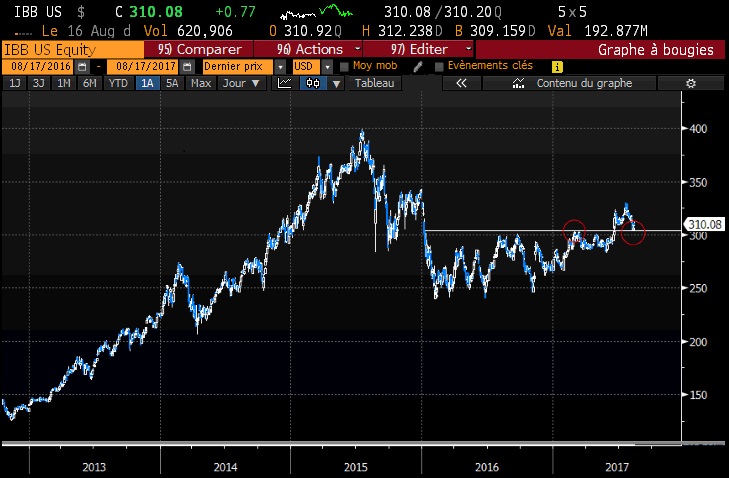The sector leaders include Celgene, Amgen, Biogen, and Gilead, which account for 35% of sector market capitalization. These companies remain among the most expensive on the market, if we consider enterprise value to sales or enterprise value to profits (EBITDA). For example, Celgene is trading at 6.55x enterprise value to 2018 forecasted sales – double the average valuation for S&P 500 companies. Indeed, biotechs are not looked to as a value play (rather for their high growth potential), but it is worth keeping in mind that these valuations will put biotech stocks in the first wave of risk assets to be dumped should equity markets start to roll over. By clicking on the above company names, readers can find (under “Analysis”) our valuation estimations for the various biotech firms.
The fundamental disclaimer aside, our article today is motivated by the recent price action of the Nasdaq Biotech Index. The chart below shows that the biotech sector was a late-starter after Trump's election rally but finally broke out to 18-month highs this past June. While this should be a bullish sign, last week the index fell back touching exacting the double March highs at $303.20 (hit in two sessions), as former resistance became support.

As long at $303.20 is not broken to the downside, the current uptrend in the IBB will remain in place. However if the IBB loses the $303.20 level, the June break-out will likely become a fake-out and sellers will take the upper hand. Should the biotech sector reverse, we do not expect the Nasdaq Composite and cyclical stocks to rally further. Keep an eye on this key sector and support level for trading U.S. equity indexes.

 By
By 














